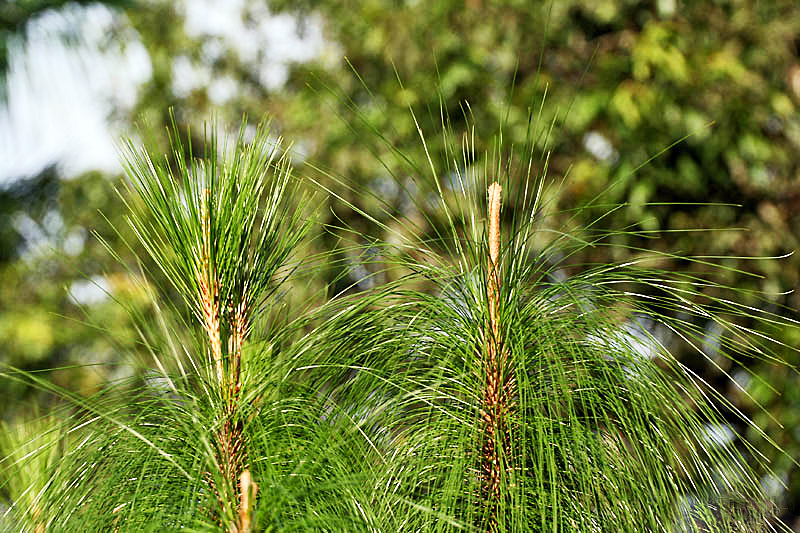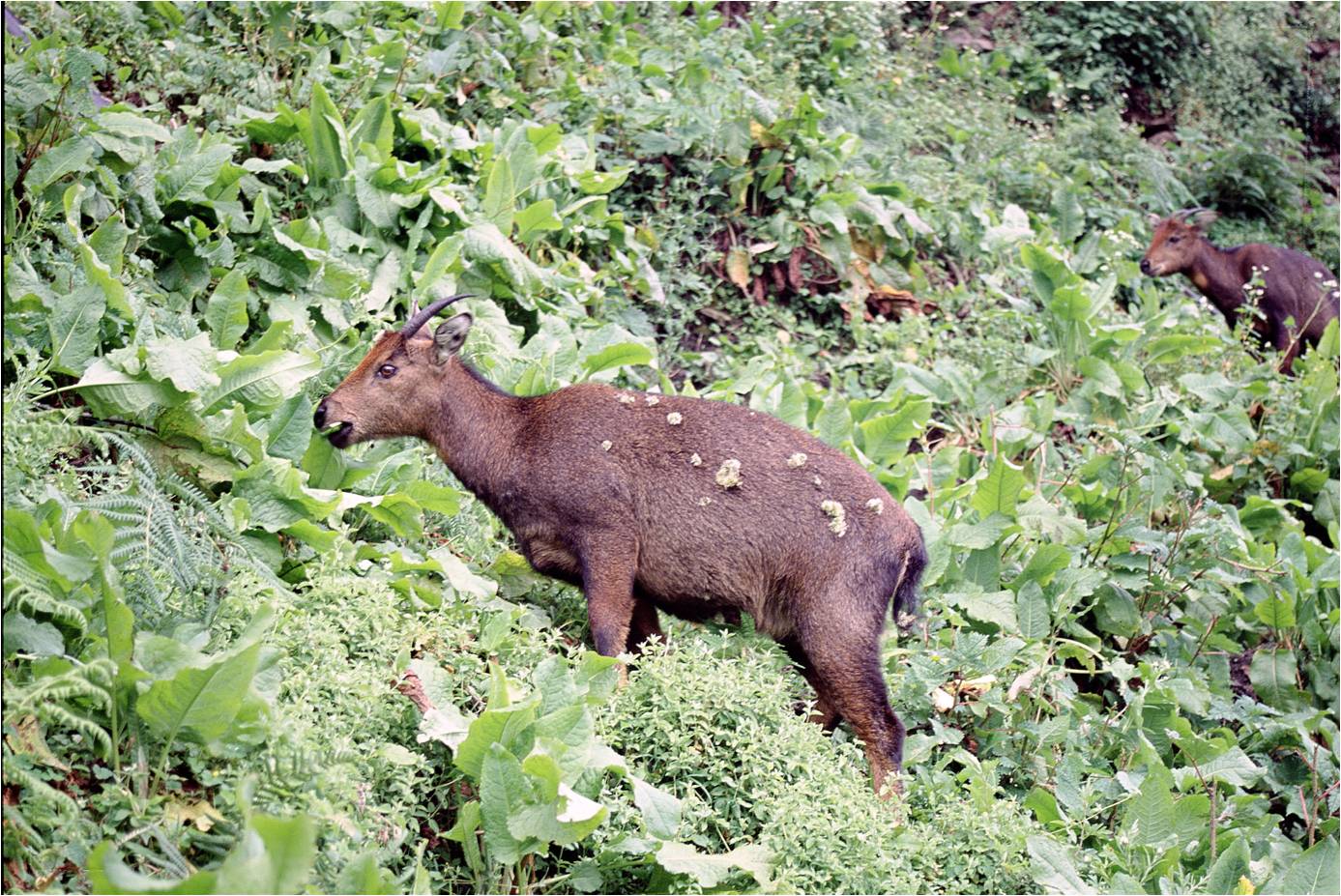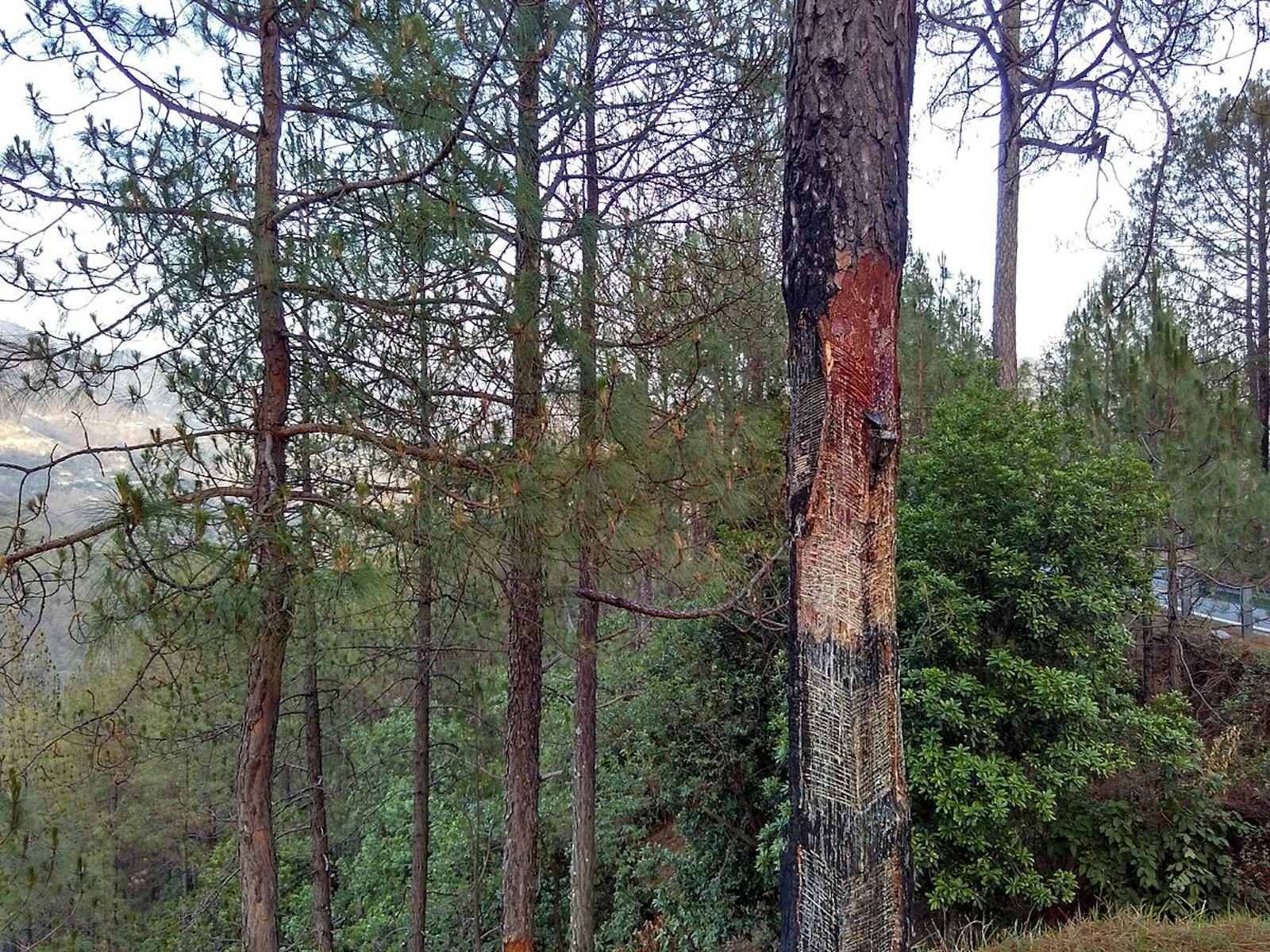Himalayan Subtropical Pine Forests
The ecoregion’s land area is provided in units of 1,000 hectares. The conservation target is the Global Safety Net (GSN1) area for the given ecoregion. The protection level indicates the percentage of the GSN goal that is currently protected on a scale of 0-10. N/A means data is not available at this time.
Bioregion: Himalayan Mixed Forests & Grasslands (IM5)
Realm: Indomalaya
Ecoregion Size (1000 ha):
7,637
Ecoregion ID:
302
Conservation Target:
34%
Protection Level:
1
States: Bhutan, India, Nepal, Pakistan
The Himalayan Subtropical Pine Forests ecoregion is dominated by a single pine species, Chir pine, and is the largest subtropical pine forest ecosystem in the Indo-Pacific region. The ecoregion stretches for over 3,000 km along the lower elevations of the Himalayan mountain range, from Pakistan to Bhutan, cutting through several Himalayan states of India and Nepal. The world’s deepest gorge, carved into the Himalaya by the Kali Gandaki River originating from the Trans-Himalayan region north of the high Himalaya, bisects this ecoregion in Nepal, dividing it into the drier western conifer forests and wetter eastern conifer forest.
The Himalayan Mountain Range was formed about 50 million years ago, when the northward-drifting Deccan Plateau collided with the Eurasian continent to thrust the Himalayas upward through massively powerful geological upheavals. Compared with other large mountain ranges, the Himalayas are geologically young.

The flagship species of the Himalayan Subtropical Pine Forests ecoregion is the Chir pine. Image credit: Creative Commons
Most of the rainfall comes from the southwestern monsoon that enters from the Bay of Bengal, usually from May through September. In the eastern Himalayas which are closer to the Bay of Bengal, rainfall is higher and earlier in the season because the monsoon winds are first intercepted here. A climatic gradient forms with the west receiving less rainfall than the east. Because the subtropical pine forests are better adapted to drier environmental conditions, the ecoregion is also much more dominant in the west.
The dominant tree species is Chir pine. The understory is scant, with a few bushes of bayberry and Bengal currant, brambly shrubs of barberry, blackberry, Himalayan raspberry, and smaller wild strawberry. Some botanists believe that climate change and human disturbance of the adjacent broadleaf forests are creating conditions more favorable for Chir pine, allowing this forest to expand and replace these neighboring forests. Biologically, this pine forest ecoregion does not harbor exceptionally high levels of species richness or endemism. Thus, although this ecoregion should be treated as a distinct facet of the region’s biodiversity, continued intrusion into the more biologically diverse temperate broadleaf forests could result in erosion of the Himalayan biodiversity.

Goral with Girardinia diversifolia sticking to body. Image credit: Creative Commons
Because of the lack of undergrowth and browse, the ecoregion does not support many grazing or browsing herbivores, except for a few goral (a goat-like animal) and the small barking deer. Because wild prey are few, the ecoregion does not support stable populations of large carnivores. Instead, the carnivores are represented by smaller mammals such as the yellow-throated marten. The bird fauna is relatively richer, consisting of about 480 species but is shared with the adjacent ecoregions.
More than half of this ecoregion’s natural habitat has been cleared or degraded due to overgrazing, overexploitation for fuelwood and fodder, and shifting cultivation. Most of the larger patches that remain are in the less densely populated western regions of the ecoregion. The protected areas extend beyond the pine forests into the adjacent ecoregions.
The priority conservation actions should be considered in the context of conservation of all Himalayan ecoregions, and are to: 1) monitor the expansion of the pine forests into the adjacent ecoregions; 2) regulate activities that drive erosion in the ecoregion; and 3) expand and better connect the protected area network to protect the remaining natural habitat from further degradation.
Citations
1. CEPF. 2005. Ecosystem Profile. Eastern Himalayas Region. Prepared by WWF-US, Asia Program and BirdLife International.
2. Wikramanayake, E, E. Dinerstein, et al. 2002. Terrestrial Ecoregions of the Indo-Pacific: A Conservation Assessment. Island Press.
3. Nautiyal, A., 2015. Is Chir Pine Displacing Banj Oak in the Central Himalaya? Socioeconomic Implications for Local People and the Conservation of Oak Forest Biodiversity (Doctoral dissertation, University of Arkansas).




